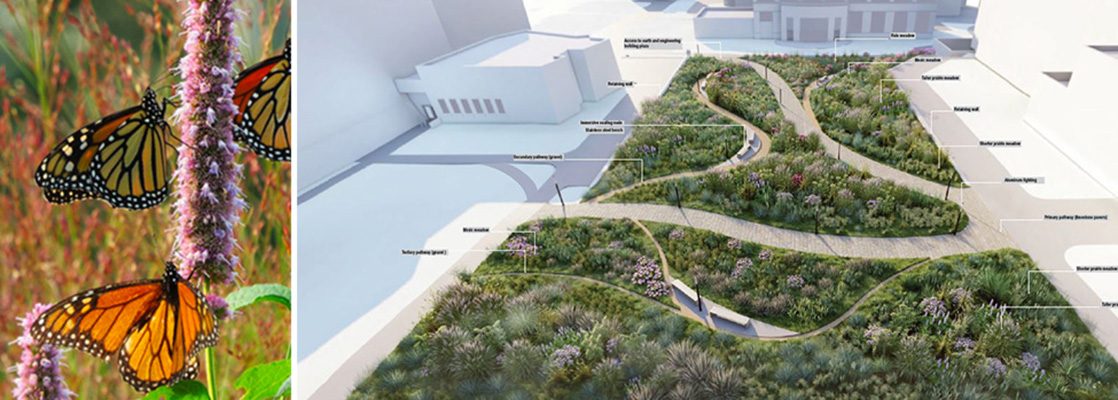Larch 335/837: Planting Methods

This page aims to provide students with supplemental resources and tutorials on planting methods. It will be constantly under construction because web-based resources and software are constantly changing and developing. The technical resources/tutorials on this page are organized by module.
Course Description and Objectives
Larch 335/837 Planting Methods is part of the core professional sequence of our accredited BLA and MLA programs. As a methods course, it complements the design studio sequence by providing an applied focus on plants and planting implementation in designed landscapes. It also serves as a setting to apply knowledge gained during Larch 145 and 245 (Ecology & Plants I and II), Larch 246 (Ridge & Valley), and other ‘planterly’ content in your prior design studios. Of course, we expect that Larch 335 (BLAs) and 837 (MLAs) will inform your design studio work this semester and in the following ones.
Knowledge of plants and plant culture and skill in planting design and implementation are critical aspects of the landscape architect’s education. Why? Because plants immensely contribute to sustaining and enhancing life in all forms. Well-selected, located, and managed landscape plants perform[1]. As landscape architects, we have the responsibility and privilege of helping to place these benefits in motion. <br><br>
This course aims to develop your appreciation of plants in the landscape while advancing knowledge and skills in applied planting techniques, documentation, and management protocols as distinct yet integral components of the landscape design and stewardship process. In terms of outcomes, by the end of the semester, you will have:
- gained experience in the horticulture and ‘ecoculture’ of established and emerging planting genres—the mixed pollinator garden, treed urban plaza, meadow and hydric habitats, and other planted landscape contexts;
- built technical abilities in species selection, planting establishment and soil improvement methods, planting installation details, and adaptive management of the planted landscape;
- gained fluency in contract documentation (CD) that accurately and clearly communicates project intents and standards to contractors and managers;
- bolstered your understanding of progressive planting design theory that addresses aesthetic, ecological, cultural, and functional factors;
- became aware of some of the performative aspects of planted landscapes in contributing to local-scale sustainability and resilience;
- considered diversity, equity, inclusion, and belonging (DEIB) aspects of planting design and planterly built works; and
- continued to develop your skills in AutoCAD and related digital media for conceptualization, visualization, and contractor instructions
[1] Landscape performance is “a measure of the effectiveness with which landscape solutions fulfill their intended purpose and contribute to sustainability. It involves assessment of progress toward environmental, social, and economic goals based on measurable outcomes (Landscape Architecture Foundation, 2024).”
References
Landscape Architecture Foundation. (2024). About Landscape Performance | Landscape Performance Series. https://www.landscapeperformance.org/about-landscape-performance
